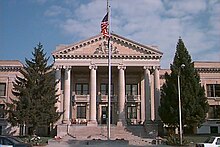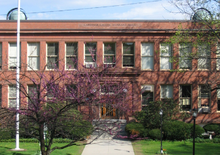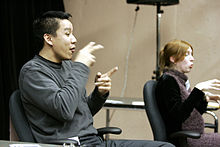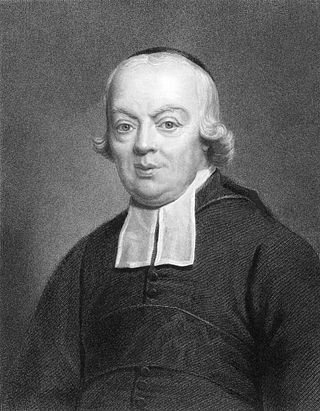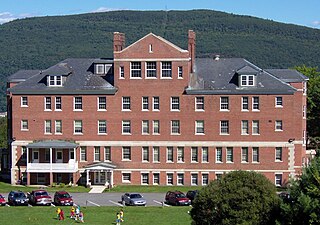Early history
Before the 1800s, few, if any, educational opportunities existed for deaf children in America. Some wealthy families sent their children to Europe's schools, but many non-high class children had no access to education. [2]
Early oral education in the United States
In the eighteenth and early nineteenth centuries, many wealthy colonists sent their deaf children to Europe to receive schooling. [3] The best known deaf educational institution was the Braidwood Academy in Edinburgh, Scotland, established in 1760 by Thomas Braidwood as the "Academy for the Deaf and Dumb." [4] The Braidwood Academy was an expensive private oral school that was very secretive about its methods, only sharing their methodology with a few select people. [4]
The Bolling family, who lived in Virginia, were the most prominent colonists to send their deaf children to the Braidwood Academy. [3] Thomas Bolling and his wife Elizabeth Gay (who was also his first cousin) had three deaf children, John, Mary, and Thomas Jr., as well as at least two hearing children. [5] [6] John was the first of the three children to go to the Braidwood Academy in 1771, with Mary and Thomas Jr. arriving later. [4] The three Bolling children arrived back in the United States in 1783; however, they became ill shortly after arriving home, and John died on October 11, 1783. [7] Because of this, it cannot be determined how effective the ten years of oral instruction he received were. [7] Mary and Thomas Jr. lived for at least another four decades, and comments about Thomas Jr. noted that he was a "miracle of accomplishments." [7]
The next generation of hearing Bollings had deaf children, and they wanted their children to be educated in the United States. [6] William, the last child of Thomas and Elizabeth, married his first cousin Mary, who bore five children, two of whom were deaf. [6] The couple's first deaf child, William Albert, drove his father's desire to create a school for the deaf in America. [6] William Bolling met John Braidwood, a descendant of Thomas Braidwood, after he arrived in America in 1812. [6] [8] Bolling invited Braidwood to stay in his home as Braidwood sorted out a more permanent living arrangement. [8] Braidwood discussed with Bolling his desire to open a school similar to the Braidwood Academy in America. [8] After many setbacks, the Cobbs School was established in 1815. [9] [10] It closed about a year and a half later, in the fall of 1816, when Braidwood's personal problems caused him to leave the school and Bolling could no longer financially maintain it. [10]
Early manual education in the United States
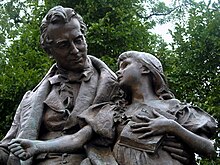
In 1812 in New England, Thomas Hopkins Gallaudet met a little girl named Alice Cogswell, who inspired him to create a school for the deaf in the United States. In 1815, he traveled to Europe to gain insight on their methods of teaching deaf students. [11] He attempted to learn from the Braidwood system, but the administrators wanted him to sign a contract, remain at the school for several years to be trained in oralism, and agree to keep the teaching methods of the school a secret; Gallaudet refused this. [11] He attended a lecture in France by Abbé Sicard showcasing two successful pupils of Paris' National Institution for Deaf-Mutes, Jean Massieu and Laurent Clerc. Gallaudet spent several months at the school, and he convinced Clerc, a thirty-year-old assistant teacher, to return with him to Hartford, Connecticut. Back in America, they established the Connecticut Asylum for the Deaf and Dumb, which was later named the American School for the Deaf, in 1817. Gallaudet was the director, and Clerc was the first deaf teacher in America. Alice Cogswell was one of the first seven students. [12]
For most of the remainder of the century, education of deaf children using sign language, a practice known as manualism, continued to grow. Approximately forty percent of all teachers were deaf. [13] More than thirty schools for the deaf were opened, the majority of which were manual. In October 1829 Ohio School for the Deaf was established; it is the fifth oldest residential school in the United States. [14] and is the only publicly funded residential school for the deaf in Ohio. William Willard was the first deaf superintendent in America and founded Indiana School for the Deaf in 1843. [13] [15] Gallaudet College (now Gallaudet University) was founded in Washington, D.C in 1864 with Thomas Hopkins Gallaudet's son, Edward Miner Gallaudet, as the school's superintendent. [16] [17] Edward Miner Gallaudet strongly believed in the use of sign language and had a number of arguments with Alexander Graham Bell, an oralist. [18]
Before the 1860s and before the American Civil War, manual language was very popular among the Deaf community and also supported by the hearing community. [19] The hearing community viewed deafness as “[isolating] the individual from the Christian community”. [19] At the time, the people of the United States were fairly religious (notably Christian), and the hearing-advantaged believed that sign language opened deaf individuals' minds and souls to God. [19] Through this, the hearing community believed that manualism brought deaf people closer to God and opened deaf people to the Gospel, which brought manualism general acceptance.
Prior to the 1860s, the American hearing community viewed manualism, sign language, as an art, and naturally beautiful. [19] They also thought of deaf people who signed as being like the Romans because of the pantomimes that are a part of the language. [19]

